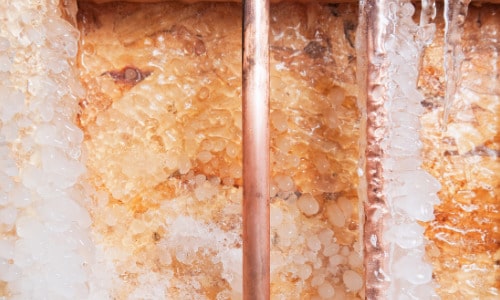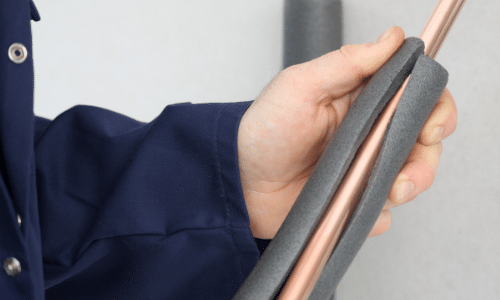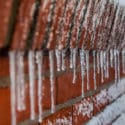Are Those Pipes Ready To Handle the Dropping Temperatures?
It’s the middle of autumn, yet some parts of the country are already seeing snowstorms and freezing temperatures. And it’s only going to get colder as the holidays approach (and on into the New Year). While the season is ripe for sledding and snowman building, it can also present its share of problems. Many homeowners will find that when the winter frost makes its way into their water lines, the results can be beyond chilling.
Perils of Frozen Pipes

When the water inside a supply pipe freezes, it expands dramatically in any direction it can. Since all supply lines are necessarily kept under pressure, this expansion creates an overpressurized system. And, since most supply pipes are made of thin copper, the mounting pressure (or the expansion of the ice itself) will fracture the pipe wall and make its escape. Water will then leak or spray out until the supply valve is closed.
The resulting water damage can be extensive, and repairs can be expensive, especially if the pipe burst occurs in an attic or similar area. When this happens, the water can flow down through the ceiling or walls. And the longer the break goes unnoticed, the worse the impact will be. Some unfortunate homeowners come back from their holiday travels to find that their basements or homes have been flooded by a burst pipe.
How To Prevent Pipe Freeze
Fortunately, freezing typically only affects outdoor plumbing and sections of pipe in less-protected areas of the home, such as attics, outer walls, and cellars. Outdoor plumbing like hose bibs and irrigation systems can be protected by winterization, which involves shutting off their supply valves and completely draining the pipes.
Protecting indoor plumbing from freezing can be done in a few ways. One approach is to open indoor faucets to a slight trickle, which relieves pressure and maintains enough water flow to prevent freezing. Opening cabinets may help more warmth reach pipes in outer walls. These measures may help in some cases but aren’t exactly practical. By far, the most effective way to prevent freezing is to insulate the pipes themselves.
Varieties of Pipe Insulation
Pipe insulation comes in many forms, each with its strengths and drawbacks. Electric pipe heaters are essentially plug-in cords coiled around pipes and produce a small amount of heat. These are relatively expensive and not very common but work well in instances where pipes are exposed to freezing temperatures. Foil-and-fiberglass insulating tape is more common and considerably less costly. It can simply be wrapped around the exposed pipes like a bandage.

Equally as effective, and perhaps the most widely used type of pipe insulation is foam tubing. Foam tubing fits snugly around the circumference of a water pipe. Most foam tubing provides a layer of protection an inch thick, if not more. Some types of insulation may not fit every homeowner’s needs. That’s why it’s always a good idea to consult with a professional plumber to determine how best to protect pipes from freeze damage.
About Valley Plumbing and Drain Cleaning
Valley Plumbing and Drain Cleaning has served West Jordan and Lehi, UT, since 2011. As a family-owned and family-run local business, their outstanding service and workmanship have earned them numerous awards and consistently glowing customer reviews. They provide honest, competitive pricing and 24-hour emergency response, as well as rewarding membership & referral programs. Call Valley Plumbing and Drain Cleaning for frozen or burst pipe repair in Lehi.


